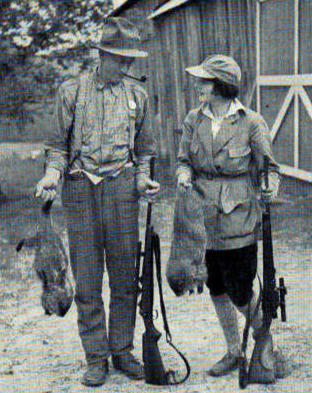

 The Accurate Reloading Forums
The Accurate Reloading Forums  THE ACCURATE RELOADING.COM FORUMS
THE ACCURATE RELOADING.COM FORUMS  Hunting
Hunting  Varmint Hunting
Varmint Hunting  moly coated barrels
moly coated barrelsGo  | New  | Find  | Notify  | Tools  | Reply  |  |
| One of Us |
kcfx - First off - Yes, you must burnish the moly into the bore to coat it properly. You should start with a perfectly clean bore - no traces of copper fouling. Shoot one moly bullet, and clean with a good copper solvent till no indication of copper, shoot another moly bullet and clean. Do this for about 15 rounds and your bore is ready to shoot moly. Second - moly does NOT increase velocity. It actually reduces chamber pressures because it reduces bullet/barrel friction. This reduces powder burn rate and this ultimately reduces velocity. However, when working your load development with moly bullets, you CAN achieve higher velocities with the same chamber pressure as you would experience with naked bullets. Third - As to cleaning. I still run a few patches of Butch�s Bore Shine down the bore every 20 or so rounds. I am only removing powder fouling and controlling throat fouling (a problem with moly bullets). I aggressively clean after 100 to 130 rounds or when accuracy begins to drop off. I soak the bore over night in Butch�s and use JB bore paste to pull the rest of the moly out. (short version) Fourth - It takes about 5 rounds to re-season the bore after a aggressive clean. Shooting over a chronograph will quickly tell you when your gun is back into the grove. I do back off charge weights for the first 5 or 10 rounds when re-seasoning bore. You can experience some unexpectedly high chamber pressures until the bore is fully coated once again. I also use Moly Bore Prep to speed up the burnishing process. One more thing - You should protect your moly bore as you would a clean bore when storing. A few patches of Kroil or any good non-Teflon oil will work. Otherwise, lab grade moly is perfectly safe in firearms. . . [ 01-07-2003, 07:09: Message edited by: Zero Drift ] | |||
|
| Powered by Social Strata |
| Please Wait. Your request is being processed... |
|

Visit our on-line store for AR Memorabilia

